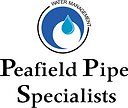Hydrostatic pressure testing is a critical process used in various industries to ensure the safety and integrity of pressure vessels, pipelines, and other components. This method involves subjecting a component to a controlled increase in pressure to check for leaks, weaknesses, or structural defects. To conduct this test effectively, specialized equipment and tools are essential. In this article, we will dive into the world of hydrostatic pressure testing equipment and tools, exploring their importance, types, and applications.
The Key Components of Hydrostatic Pressure Testing
Before delving into the equipment and tools used in hydrostatic pressure testing, it’s crucial to understand the fundamental elements of this process. Hydrostatic pressure testing involves filling a vessel or pipeline with a liquid, typically water, and gradually increasing the pressure to a predetermined level. This pressurized environment helps identify any potential flaws in the structure, such as weak spots or leaks.
The Importance of Reliable Equipment
Reliable equipment and tools are the backbone of successful hydrostatic pressure testing. Safety is paramount in this process, as a failure can result in catastrophic consequences. High-quality equipment ensures that the testing is accurate and that the results can be trusted. The use of inferior or faulty equipment can lead to false readings and, ultimately, unsafe conditions.
Common Hydrostatic Pressure Testing Equipment
Pressure Testing Pump: A pressure testing pump is a fundamental component of the testing process. It is responsible for increasing the pressure within the vessel or pipeline gradually. These pumps are designed to handle high-pressure applications, making them essential for accurate testing.
Pressure Gauges: Pressure gauges are used to monitor and display the pressure within the system accurately. Digital pressure gauges are becoming more popular due to their precision and ease of use.
Test Medium Container: This is where the liquid used for testing, typically water, is stored. The container should be sturdy and leak-proof to prevent any external factors from affecting the test.
Control System: The control system allows operators to regulate and monitor the pressure testing process accurately. It ensures that the pressure is increased gradually and maintained at the desired level.
Safety Valves and Relief Systems: These are crucial for preventing over-pressurization, which could lead to catastrophic failures. Safety valves and relief systems are designed to release pressure when it exceeds safe limits.
Advanced Hydrostatic Pressure Testing Equipment
In addition to the basic equipment, advanced tools and systems have been developed to enhance the accuracy and efficiency of hydrostatic pressure testing. These include:
Automated Testing Systems: These systems can control and monitor the pressure testing process automatically, reducing the risk of human error and providing precise results.
Ultrasonic Testing Devices: Ultrasonic testing devices use sound waves to detect defects or irregularities in the material being tested. They are particularly useful for finding hidden flaws that might not be visible on the surface.
Remote Monitoring Systems: These systems allow operators to monitor pressure testing remotely, enhancing safety by reducing the need for personnel to be in close proximity to the test site.
Applications of Hydrostatic Pressure Testing
Hydrostatic pressure testing is widely used across various industries to ensure the safety and reliability of critical components. Some of the key applications include:
Oil and Gas Industry: Pressure vessels, pipelines, and wellheads in the oil and gas industry undergo extensive hydrostatic pressure testing to prevent leaks and failures that could result in environmental disasters.
Aerospace: Aircraft components, such as fuel tanks and hydraulic systems, are subjected to hydrostatic pressure testing to ensure their integrity and safety during flight.
Manufacturing: Manufacturers of pressure vessels, boilers, and industrial equipment use hydrostatic pressure testing to verify the quality of their products before they are put into service.
Construction: Water and gas pipelines used in construction projects are tested to ensure they can withstand the pressures they will encounter in real-world applications.
Conclusion
In conclusion, hydrostatic pressure testing equipment and tools play a crucial role in ensuring the safety and reliability of pressure vessels, pipelines, and other critical components across various industries. These tools not only help detect potential flaws but also provide valuable data for engineers and operators to make informed decisions. Investing in high-quality equipment and staying up-to-date with the latest advancements in testing technology is essential for maintaining the highest standards of safety and quality assurance in industrial applications.
